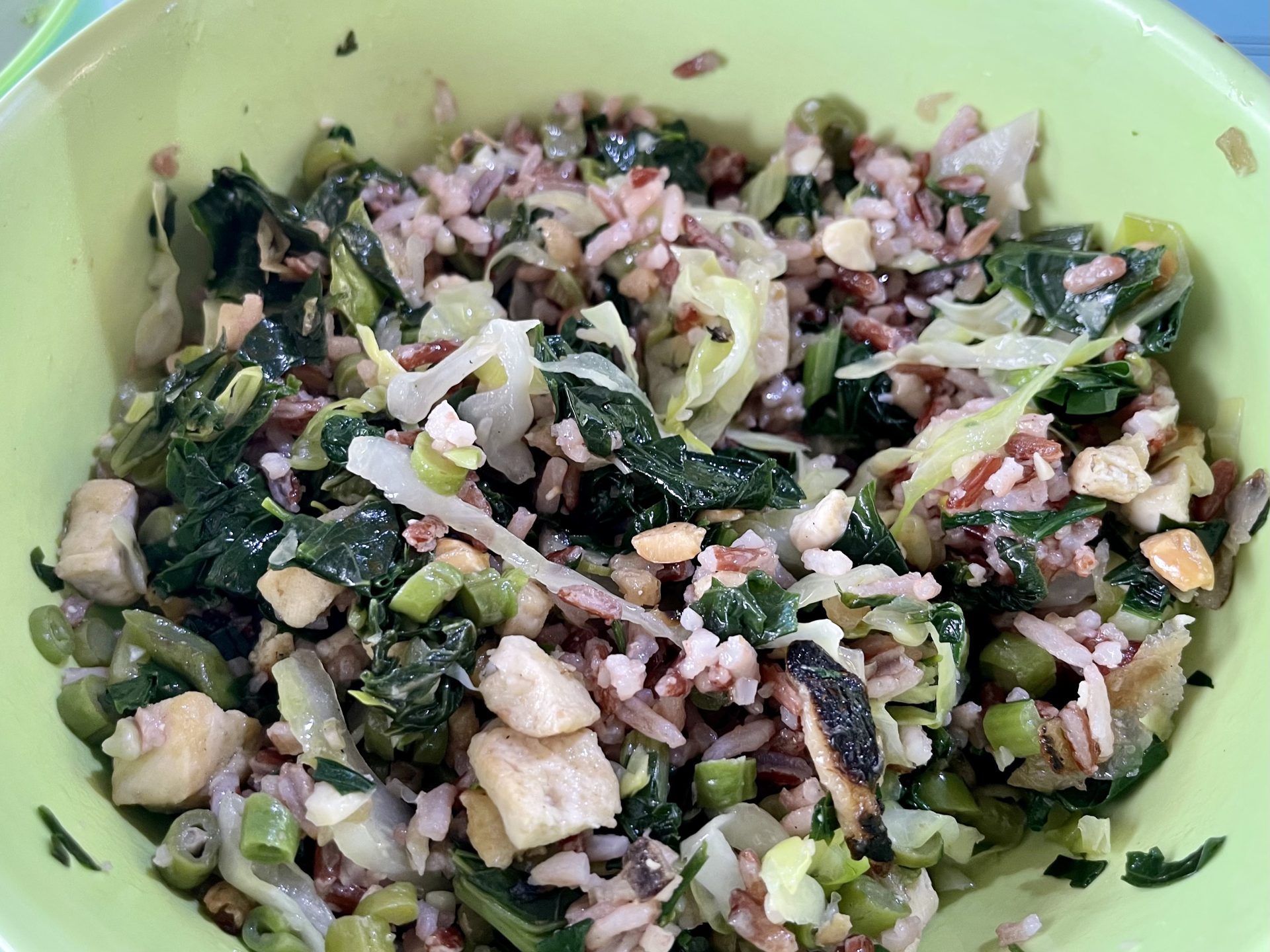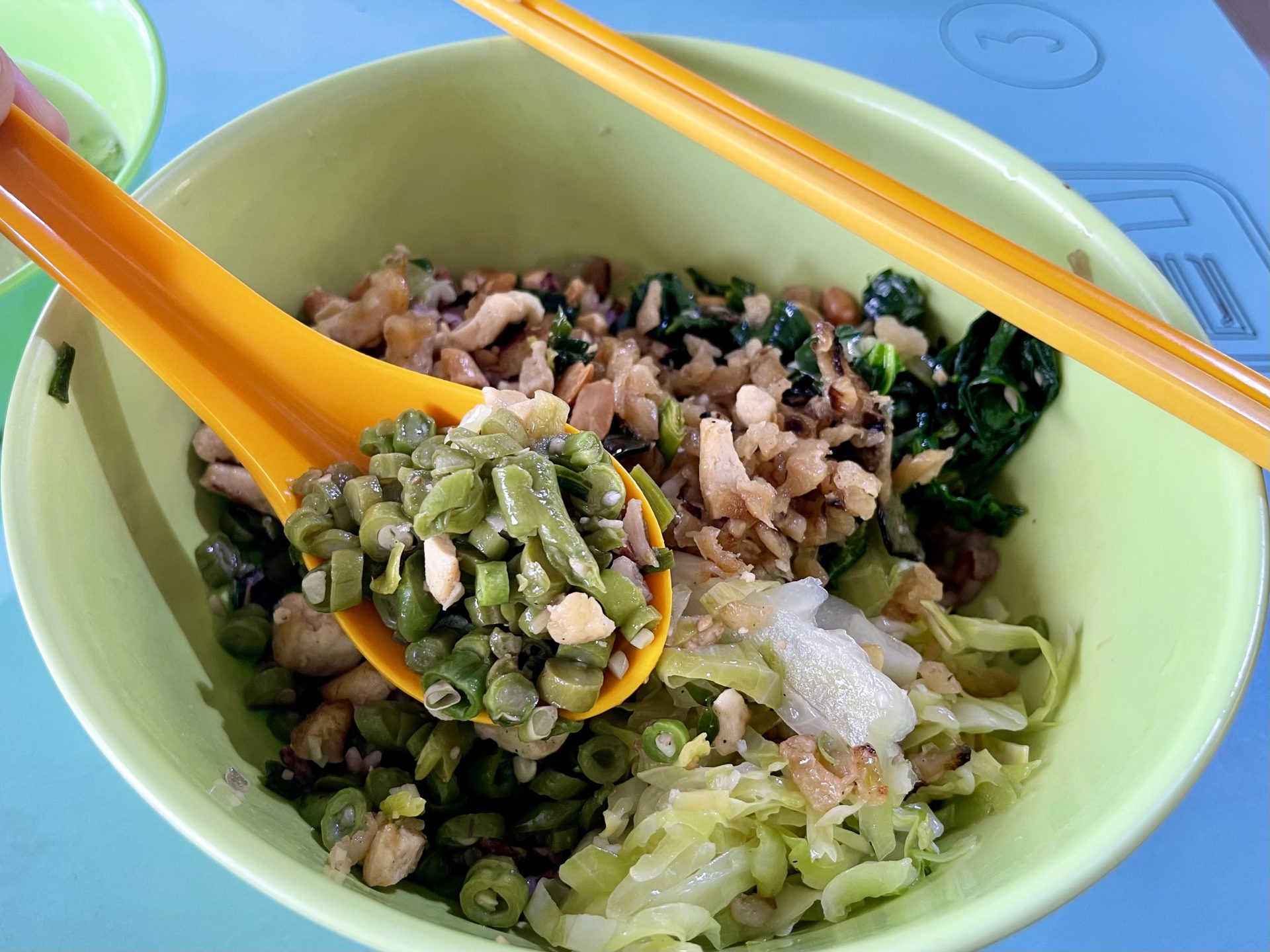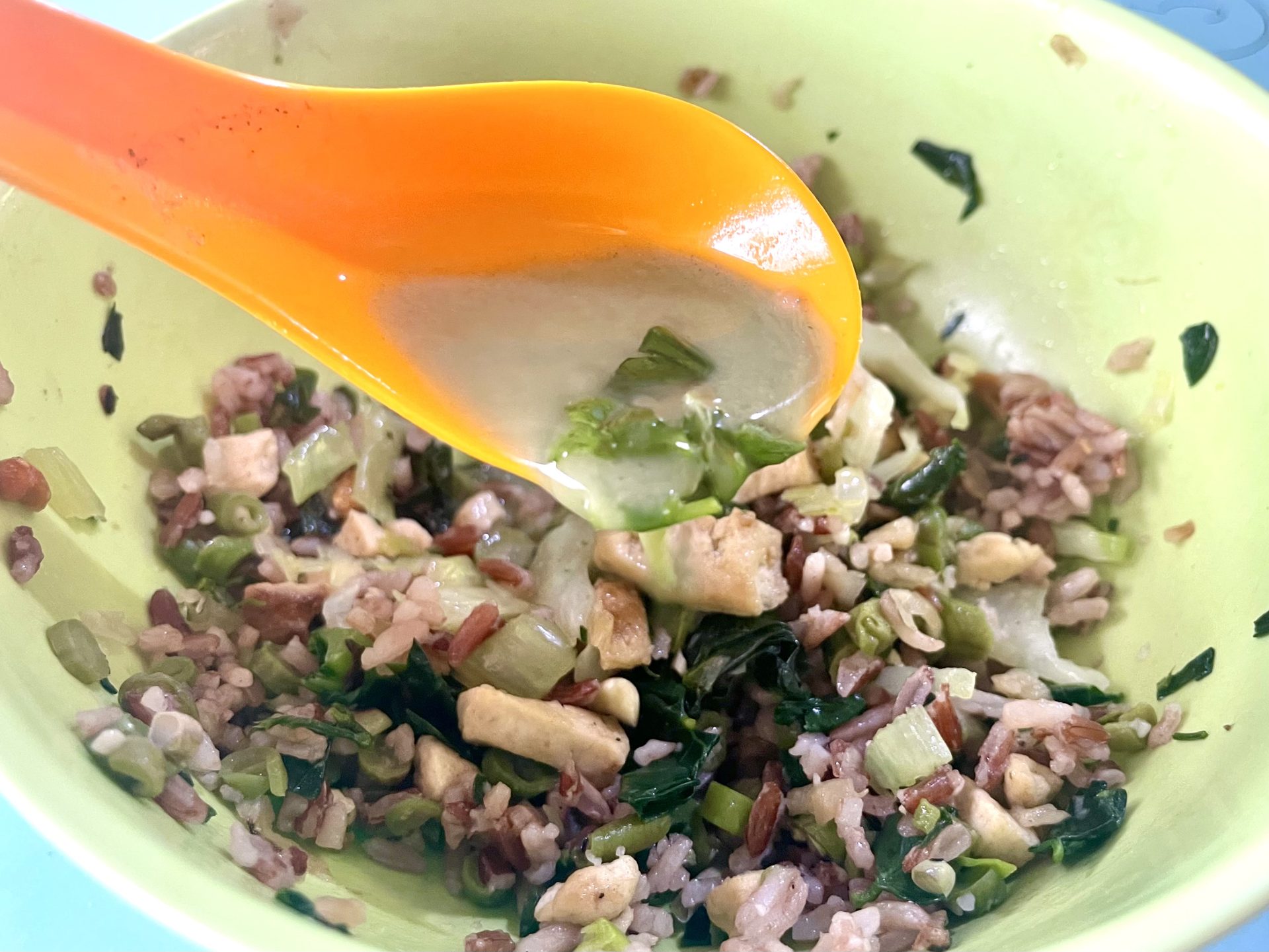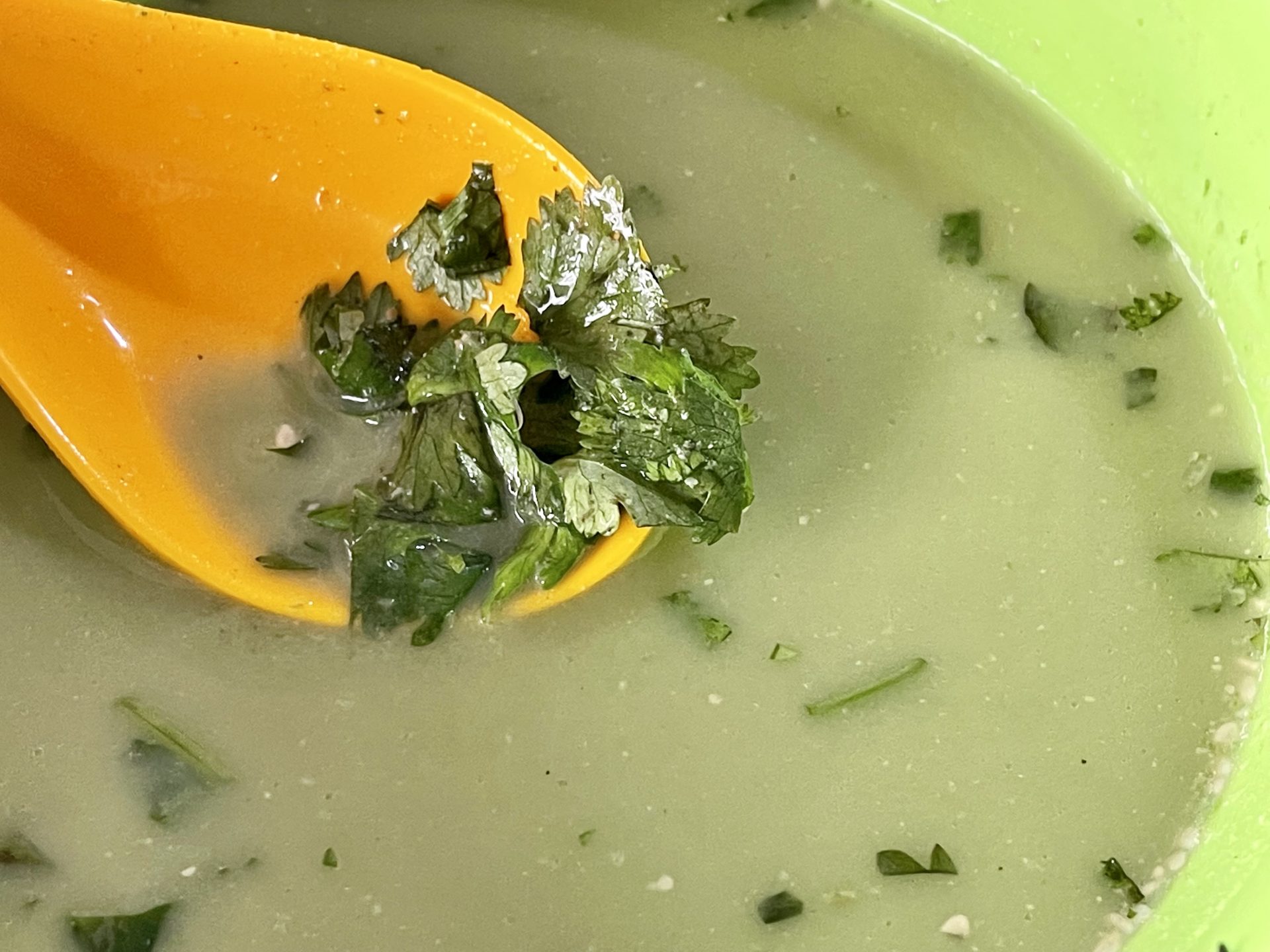Born and raised as a Hakka, I am ashamed to say that I have never eaten thunder tea rice, a quintessential Hakka dish that is well-loved by the Hakka people and a dish that is unique in its taste. Hidden in the far corner of Singapore at Jurong West 505 Market and Food Centre is Traditional Hakka Lui Cha, a store selling healthy thunder tea rice bowls that intrigued the curiosity in me.
Breaking down the words, the Hakka word Lei, ‘擂’ refers to grit in Chinese, reminiscent of the traditional grinding of vegetables and herbs in a circular motion. The iconic dish consists of boiled rice that is blanketed over many different vegetables, tofu, preserved radish, and peanuts. Some stores even include minced meat in their bowls but with this store, it is vegetarian. From that, you know that this dish is entirely customisable to whatever ingredients available.

Amidst the crowd at the hawker lies the humble store that patiently served each customer despite the rush hour. Notably, Traditional Hakka Lui Cha was one of the more popular stalls, entertaining the incoming influx of customers with every glance.
Their signage is unassuming, and it blended in with the rest of the stores. But when I took notice, I figured why not give it a go?

The store prides themselves for prioritising health without compromising on flavour without the use of MSG. They also lessen the portion of oil and salt in their dishes, so you’re assured that you’re consuming real health bowls.
What I tried at Traditional Hakka Lui Cha

I ordered their Hakka Thunder Tea Rice, and opted for brown rice instead of white because I wanted the full healthy experience. Their normal bowls are usually priced at S$4, but this went for S$4.50, fifty cents more because of the alternate change in carbohydrate. Your meal is accompanied a myriad of vegetables over your rice and a bowl of thunder tea.
While most might hesitate away from having brown rice, I chose that instead because it has been ingrained in my diet since young. I like the grainy texture that brown rice gives!

To zoom in on the main dish, I was presented with chye sim, Chinese cabbage, green beans, tau kee and peanuts, and it also had preserved radish in the middle. All meticulously chopped up.
First look and I know that it’s worth my money— the portion of each component is quite large. I tried to gauge how much ingredients they gave, and each component was more than one big spoonful.

Time to mix it up! Now for the taste test— one mouth in and I was hit with an abundance of earthiness. This is truly something I have never tasted before. Interesting!

Generally very herbaceous in nature, the radishes have a tinge of sweetness that elevates the whole earthy palate of the thunder tea rice bowl. Some of these even had a slight char, which tasted a bit like caramelised onions in my opinion.
With most ingredients being vegetables, the other components like turnips, tofu and peanuts brought it up a notch. If I had to identify a star ingredient out of the bunch, I would say the roasted peanuts made a brilliant key element. Its salty flavour brings out bursts of saltiness alongside the crunchy layer of all the other components, transcending the dish to another level.

The vegetables added layers of crunch to each bite. The chopped up long beans in particular made the crunch texture tenfold. The chye sim on the other hand was tender and soft, working well with the rest of the vegetables as it complemented each other. The mix of soft, crunchy, and tender textures resulted in a lovely harmonious blend.

Shortly after I devoured about half my meal, I started adding spoonfuls of the thunder tea in my bowl. It was awesome! The tea broth added so much more flavour than before, just because of the hints of mint and basil leaves blended into the soup. Furthermore, the moisture from the tea made the process of eating much smoother. Little did I know that this is actually the traditional Hakka way of consuming thunder tea rice, by pouring your whole bowl of tea into the rice bowl!


The tea is made predominantly by green tea leaves, basil leaves and a load of coriander. If you examine, you can even identify some sesame seeds inside the tea bowl. As such, there are two dominant layers to this: at first, you’re first introduced to the nuttiness of the grounded herbs and nuts from the tea-soup. But it fades out into this tangy, minty flavour that is a real acquired taste!
Please remember to give it a stir before consuming though, as Traditional Hakka Lui Cha makes their tea-soup from a concentrated paste that is later added with hot water to dissolve it into a broth-like consistency.
Final thoughts

A glance up and another queue was formed. It’s really insane witnessing the constant flow of customers coming in at Traditional Hakka Lui Cha. On second thought, actually, I am not surprised at all. The herbaceous meal is a dish that is incomparable to other any other Singaporean dishes out there and the store provides a delicious vegetarian rendition of their own.
Who said hawker food can’t be healthy?
Expected damage: S$4 - S$ 4.50
Other articles you might like:
16 best food secrets in Jurong that’s worth the travel time
10 food spots in Jurong Point to savour when in Boon Lay


